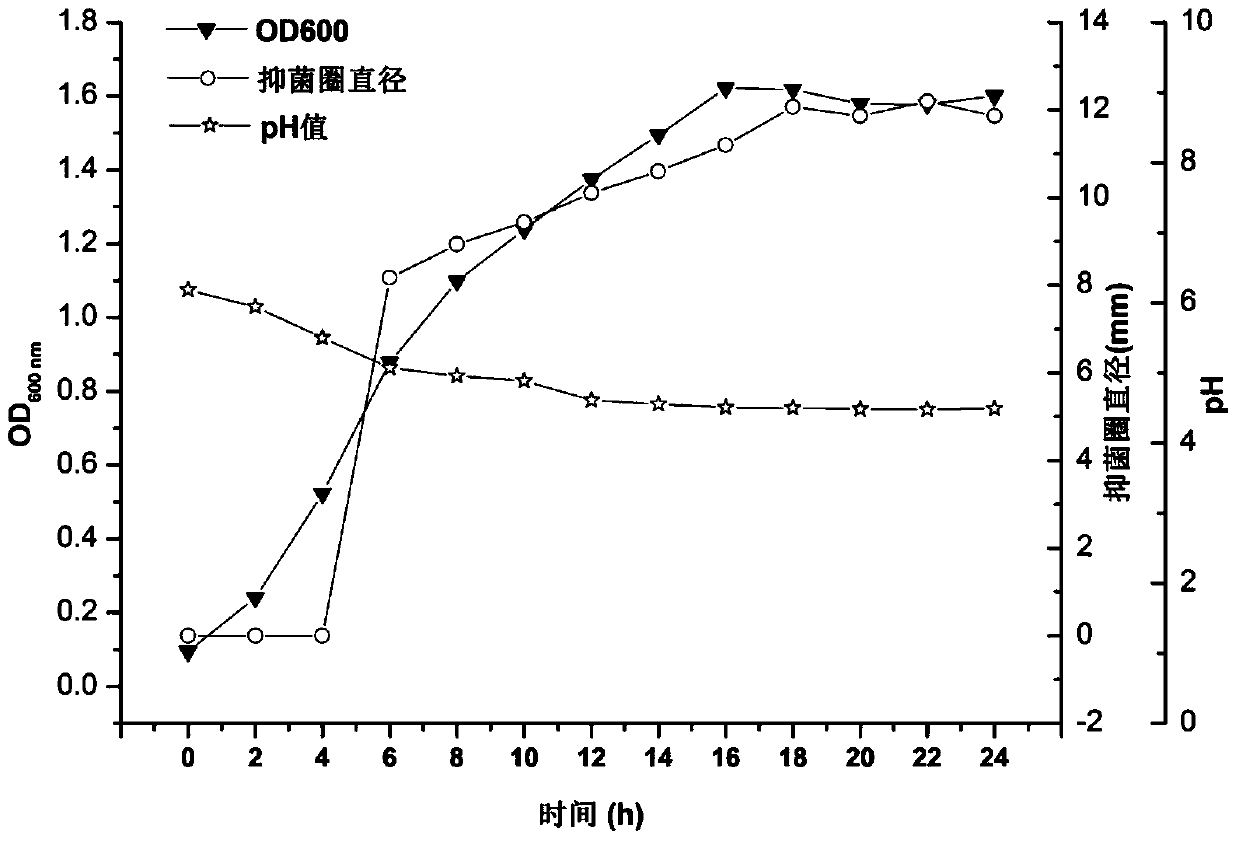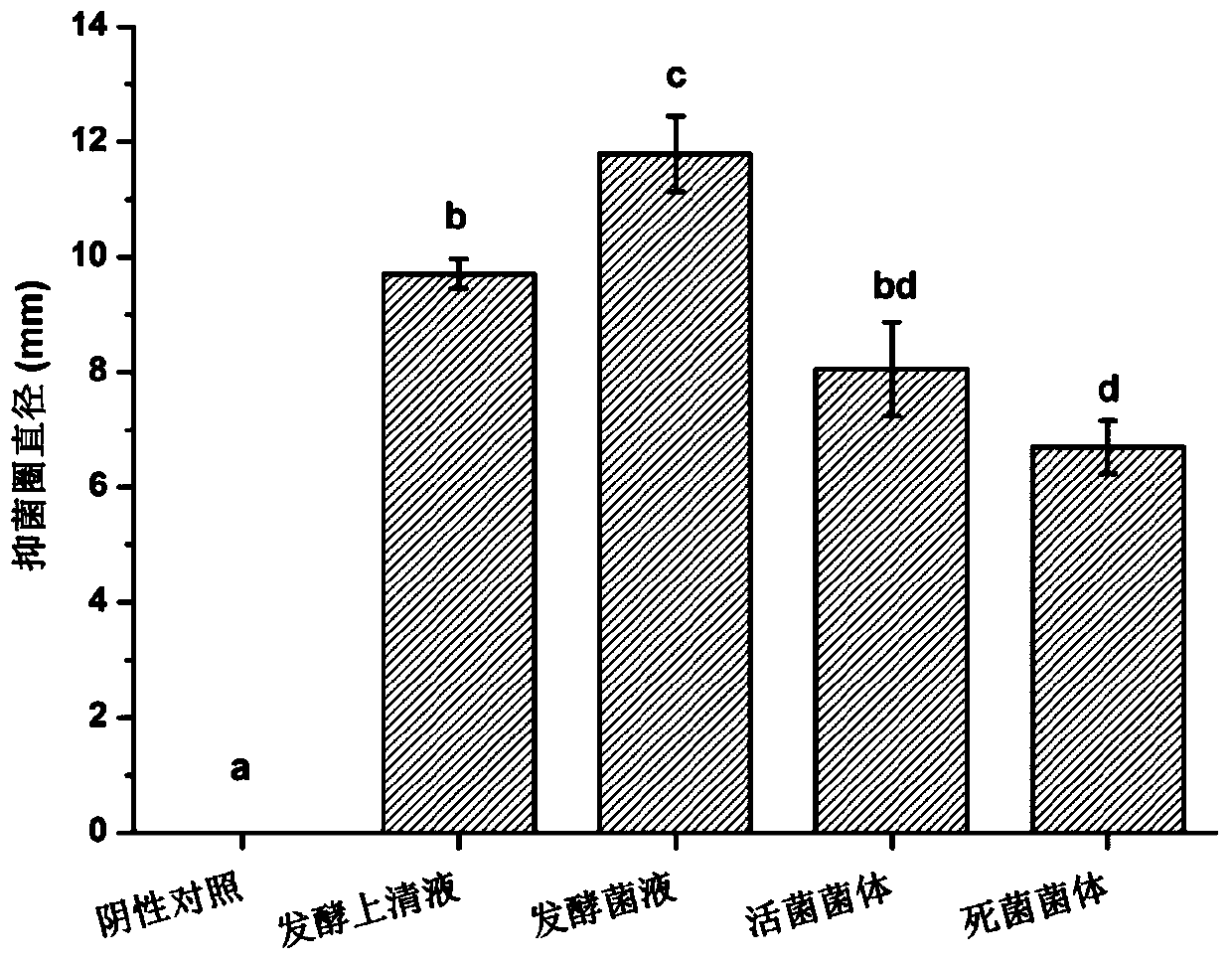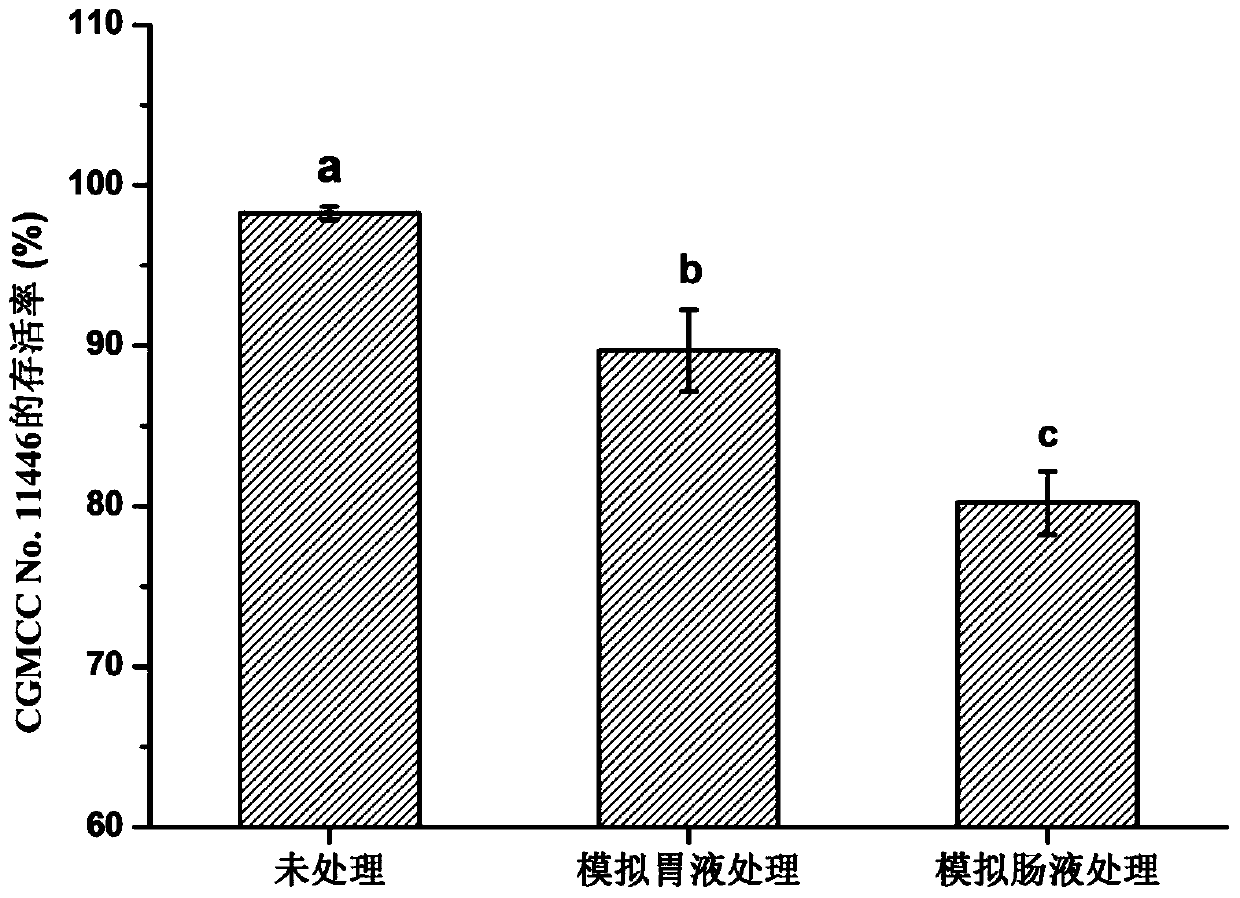A kind of Lactobacillus plantarum resistant to Salmonella enteritidis infection and application thereof
A technology of Salmonella enteritidis and Lactobacillus plantarum, applied in the field of microbiology, can solve severe sepsis, death and other problems, achieve good inhibitory ability, reduce infection, and improve growth
- Summary
- Abstract
- Description
- Claims
- Application Information
AI Technical Summary
Problems solved by technology
Method used
Image
Examples
Embodiment 1
[0028] Physiological curve experiment of embodiment 1 Lactobacillus plantarum CGMCC No.11446
[0029] MRS medium is a medium well known to those skilled in the art, and it contains peptone fish meal, yeast extract, glucose, sodium acetate, diammonium citrate, Tween 80, magnesium sulfate, manganese sulfate, pH 6.2-6.4.
[0030] Inoculate the Lactobacillus plantarum CGMCC No.11446 that has entered the stable growth phase in the MRS liquid medium at an inoculation amount of 2% based on the mass of the MRS liquid medium, and culture it at 37°C. Take samples every 2 hours and measure the OD600 value, pH value and supernatant inhibited Salmonella enteritidis activity, obtained as attached figure 1 Physiological curve of Lactobacillus plantarum CGMCC No.11446 shown.
[0031] attached by figure 1 It can be seen that Lactobacillus plantarum CGMCC No.11446, cultured at 37°C, enters the mid-log phase at 6 hours, enters the stable phase at 16 hours, at this time the OD600 value is the la...
Embodiment 2
[0032] Example 2 Analysis of the inhibitory ability of Lactobacillus plantarum CGMCC No.11446 to Salmonella enteritidis strains
[0033] LB culture medium was poured into a plate (15 mL per plate, and the plate was a standard plate of 9 mm), and the Salmonella enterica CCFM9161, Salmonella enterica CCFM9162, Salmonella enterica CCFM9163 and Salmonella enterica CCFM9164 (Salmonella enterica) CCFM9164 ( The above-mentioned experimental strains are all from the bacterial strain bank of the Food Biotechnology Center of Jiangnan University) and spread on the plate (the concentration is 1×10 8 CFU / plate), put it into 4 Oxford cups immediately, and add 100 μL of Lactobacillus fermentation broth to the Oxford cups, diffuse at 4°C for 1 hour, put it in a 37°C incubator for 24-28 hours, and measure the inhibition zone size. Using MRS as a negative control, the experiment was repeated three times, and the test results are listed in Table 1.
[0034] Table 1 Analysis of inhibition of gr...
Embodiment 3
[0038] Example 3 Component analysis of Lactobacillus plantarum CGMCC No.11446 inhibiting Salmonella enteritidis
[0039] In the same manner as in Example 2, the agar diffusion test was used to detect the inhibition of the growth of Salmonella enteritidis by the live and dead bacteria resuspended in the fermentation broth, supernatant and PBS of Lactobacillus plantarum CGMCC No. 11446 of the present invention. The test results show that (see figure 2 ), the fermentation liquid and the cell-free supernatant of Lactobacillus plantarum have significant ability to inhibit the growth of Salmonella enteritidis, and the fermentation liquid shows a stronger antibacterial effect than the cell-free supernatant. This result shows that, in addition to the antibacterial substances in the supernatant, the live bacteria also have a certain antibacterial effect, which may be related to competitive growth.
[0040] The effect of pH on the antibacterial effect of the supernatant was studied. ...
PUM
 Login to View More
Login to View More Abstract
Description
Claims
Application Information
 Login to View More
Login to View More - R&D
- Intellectual Property
- Life Sciences
- Materials
- Tech Scout
- Unparalleled Data Quality
- Higher Quality Content
- 60% Fewer Hallucinations
Browse by: Latest US Patents, China's latest patents, Technical Efficacy Thesaurus, Application Domain, Technology Topic, Popular Technical Reports.
© 2025 PatSnap. All rights reserved.Legal|Privacy policy|Modern Slavery Act Transparency Statement|Sitemap|About US| Contact US: help@patsnap.com



